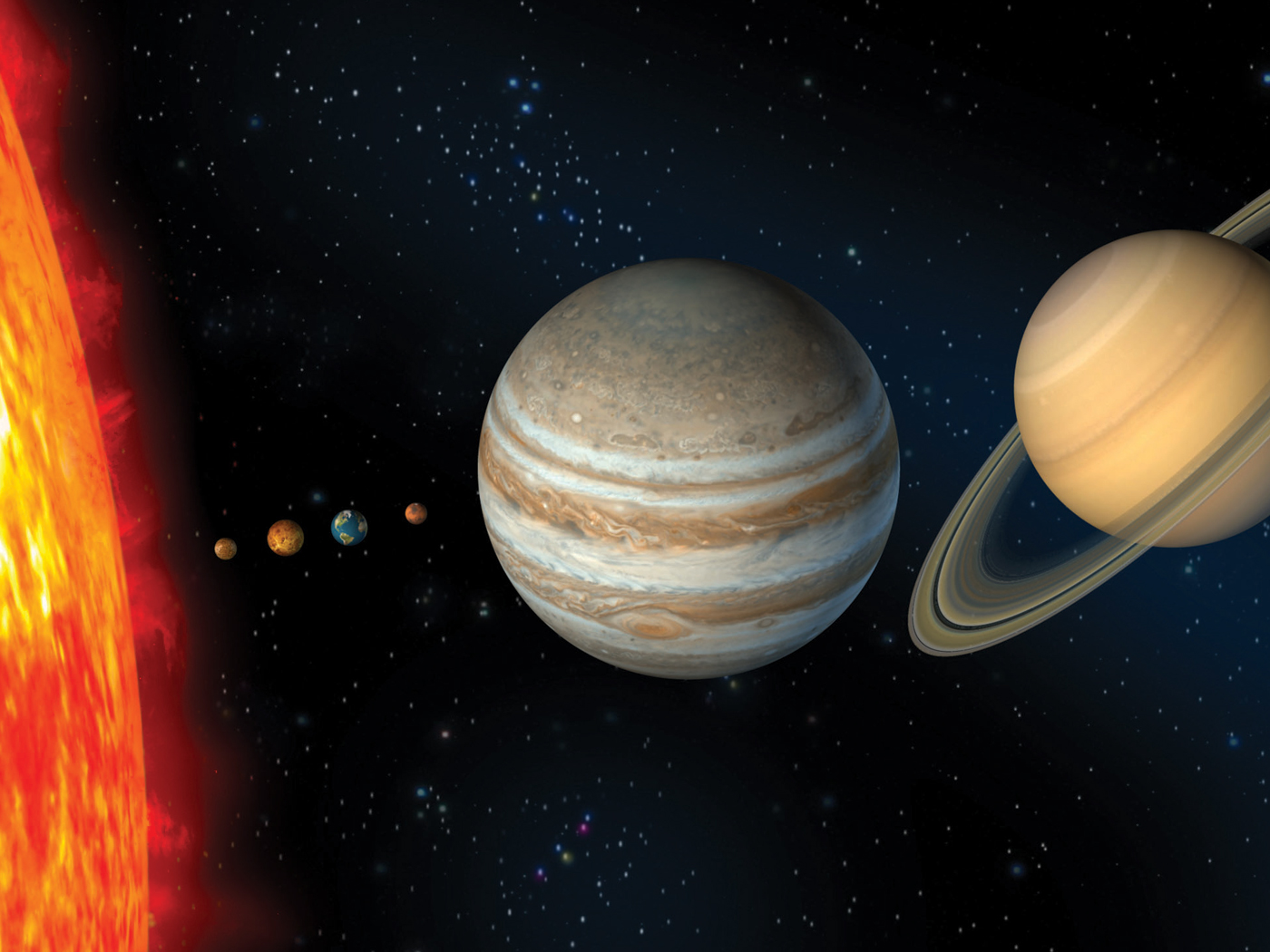In northwestern India, annual monsoon rains fill lake Kotla Dahar, which then eventually dries as it receives virtually no precipitation for about half the year. But scientists recently found clues buried in the lake-bed sediments suggesting this long dry spell wasn't always the case.1 The lake actually retained its water in the past. Ancient ruins show that, long ago, people thrived there. When and how did the climate change? Does the history recorded in Genesis provide a useful context?
One clue the researchers found was a change in fossils. Lower-lake sediments included tiny shells from organisms that prefer water year-round. A thin layer separated them from mid-level sediments containing fossils of salt-tolerant creatures, and the topmost sediment levels consisted of modern organisms known to tolerate dry spells.1
Publishing in the journal Geology, a research team from Cambridge gathered oxygen isotope data from tiny lake-bed fossils in sequence.1 These isotopes showed a trend of continuous oxygen flow—and thus water flow—occurring in lower layers to stagnant oxygen flow appearing later in upper layers.
The study authors interpreted the clues as clear signs that monsoon seasons once lasted much longer. They linked the timing of the climate changes to similar clues from across the Middle East, the Mediterranean, and China, showing what they called an "abrupt aridification," or time of mass drying, near equatorial latitudes.1 What caused this sudden weather phenomenon?
"The cause of ISM [Indian summer monsoon] weakening at ca. 4.1 ka [thousand years ago] has been related to large-scale tropical ocean-atmosphere dynamics, i.e., changes in the Indian Ocean Dipole (IOD) and El Nino Southern Oscillation (ENSO)," the Cambridge authors wrote.1 These phrases essentially refer to shifts in sea-surface temperature. But relatively subtle shifts today do not alter the broad pattern of dry spells over huge land areas. How are they supposed to explain the loss of so much ancient rainfall across the entire Middle East?
The key to having enough rain in the past to fill lake Kotla Dahar year-round is the same component that made rain more abundant across the Middle East and once filled North Africa's current deserts with tropical wetlands centuries ago—the single, post-Flood, rapid Ice Age.2,3 Sea surfaces had to have been significantly warmer in the past, and while the Flood would have provided that heat, those determined to interpret Earth's clues according to vast ages still search for a heat source.4
It would take a tremendous amount of energy to heat the oceans enough to have caused the enormous amount of rain that researchers know occurred in the ancient Middle East. Today's slow and steady, subtle temperature shifts would not generate nearly enough energy, but a brief, recent, and tremendous release of energy into the oceans could have triggered the monsoon patterns. Could the heat required to generate extensive rainy seasons have entered oceans during Noah's Flood, only to cool some centuries later?
If so, then the study authors' description of climate "steps," from tropical to subtropical, then to semiarid, might correlate to the end of the Ice Age. At that time, many ice dams melted and broke, loosing local megafloods like the one that carved the English Channel.5 Ice and cold water catastrophically drained off of continental shelves and into the world's ocean supply. In all, this drainage raised sea level by over 300 feet.6
Conventional thinking adds long stretches of time in between megafloods, therefore supporting the theory of slow and gradual cooling. Secular scientists discern from lake-bed clues that monsoon seasons once lasted longer, but they may never learn why until they consider all the clues—including those from the Bible. Through more research, investigators could find a link between the recent and rapid close of the Ice Age and the evidence of past, rapid, and dramatic climate changes in India and elsewhere.
References
- Dixit, Y., D. A. Hodell, and C. A. Petrie. Abrupt weakening of the summer monsoon in northwest India ~4100 yr ago. Geology. Published online before print February 24, 2014.
- Thomas, B. Genesis and a 'Wet' Sahara. Creation Science Update. Posted on icr.org November 3, 2008, accessed March 3, 2014.
- Hebert, J. 2013. Was There an Ice Age? Acts & Facts. 42 (12): 20.
- Vardiman, L. and W. Brewer. 2011. A Well-Watered Land: Numerical Simulations of a Hypercyclone in the Middle East. Answers Research Journal. 4 (1): 55-74.
- Thomas, B. Making Sense of Britain's Atlantis. Creation Science Update. Posted on icr.org July 27, 2012, accessed March 3, 2014.
- Hoesch, W. A. 2007. Megafloods in the English Channel. Acts & Facts. 36 (10): 14.
* Mr. Thomas is Science Writer at the Institute for Creation Research.
Article posted on March 17, 2014.




















